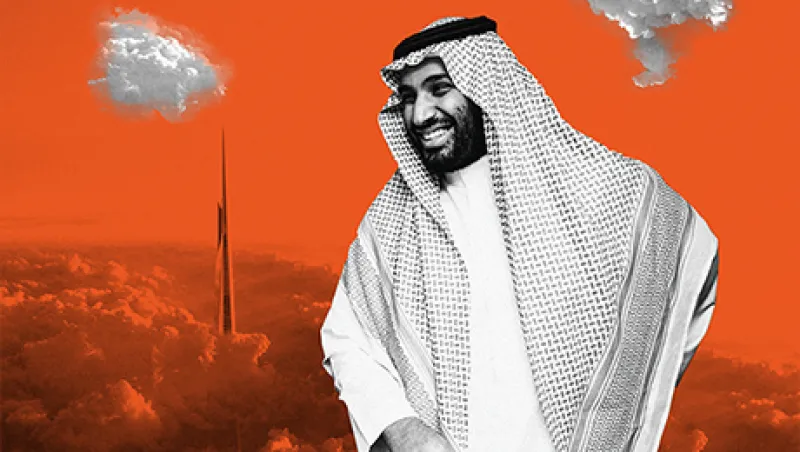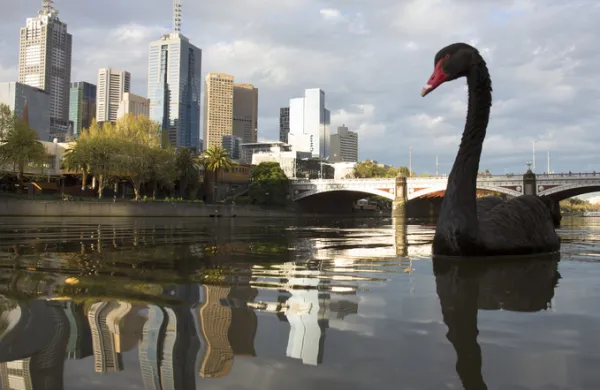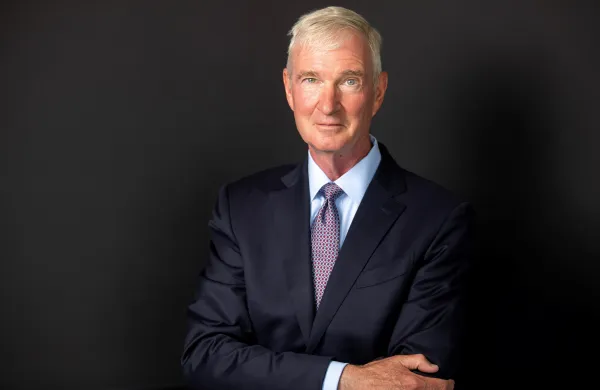Six years after Abdulaziz Ibn Saud united most of the Arabian Peninsula and founded the Kingdom of Saudi Arabia, the country struck oil, in 1938. It proved to be a mixed blessing. Abundant and easily accessible crude reserves helped the nation develop rapidly and enabled the House of Saud to buy the loyalty of its subjects with generous welfare programs and cushy government jobs, but it also left the economy dependent on a single commodity.
The plunge in the price of oil over the past two years has exposed that vulnerability like nothing before. The economy has slowed to near-recession levels, with growth expected to be just over 1 percent this year, while the government deficit surged to a record 367 billion riyals ($98 billion) last year, or some 15 percent of gross domestic product. With a resurgent Iran flexing its muscles and the Islamic State threatening instability across the Middle East and North Africa, the Saudis can ill afford an economic crisis.
Now the government is making its boldest attempt ever to wean the kingdom off hydrocarbons. In April, Deputy Crown Prince Mohammed bin Salman unveiled an ambitious plan, called Vision 2030, to slash government spending and attract foreign and domestic investment to transform the petrostate into a diversified, private-sector-driven economy. The centerpiece of the initiative is a proposal to privatize a 5 percent stake in Saudi Arabian Oil Co., known as Saudi Aramco, which Prince Mohammed hopes will fetch some $100 billion.
Riyadh’s track record of reform is spotty at best, raising doubts about whether Prince Mohammed can fulfill his vision. After years of dithering about opening up its capital markets, the government allowed foreign investors to buy stocks directly on the Tadawul last year, only to get a tepid response at best from investors because of restrictions on fund managers and concerns about the economy.
A separate initiative to build four massive new economic cities, modeled on the rise of Dubai, has been slow to get off the ground because of budget cuts and lack of investor interest.
Yet Elliot Hentov, London-based head of policy and research for State Street Global Advisors’ official institutions group, thinks this time is different. “The technocratic skill is starting to show, so the quality of the policy debate is better,” says Hentov. “You can question some issues of Vision 2030, but this is a significantly more sophisticated policy approach.”
Arguably the best grounds for optimism are the dire straits in which the Saudis find themselves. The population has quadrupled in the past 40 years, to an estimated 31.5 million people, more than half of whom are under 25. That demographic could be an engine for growth or a social powder keg. Vision 2030 aims to create 6 million new jobs, mainly in the private sector, to absorb the emerging workforce. Saudis have traditionally coveted public-sector jobs — a status symbol and determinant of marriage potential — but those are hard to sustain with low oil revenues.
The other reason people are putting stock in Vision 2030 is that the plan enjoys unequivocal royal backing. Prince Mohammed has risen swiftly since his father, King Salman bin Abdulaziz Al Saud, took the crown in January 2015. Nicknamed “Mr. Everything,” the 31-year-old boasts more power than Crown Prince Mohammed bin Nayef, his uncle and second in line to the throne, overseeing both the ministries of defense and economy. The brash royal hasn’t been afraid to flex his muscle. Last year he ordered the Saudi army to intervene in support of the government of neighboring Yemen in its civil war with Houthi rebels.
To keep its economy afloat, the government has already siphoned more than $100 billion from reserves at the Saudi Arabian Monetary Agency to support the budget, borrowed 156.6 billion riyals domestically and begun preparations for a first-ever international bond issue, a deal of more than $10 billion that could take place as early as October. The authorities have also cut subsidies and drafted plans to levy the country’s first value-added tax in 2018. But those are stopgap measures designed to reduce the deficit, not a growth strategy.
Prince Mohammed’s plan aims to increase the government’s non-oil revenues sixfold by 2030, to 1 trillion riyals. (Oil and gas now generate 80 percent of the state’s revenues.) It also aims to boost the private sector’s share of GDP to 65 percent from 40 percent and increase foreign direct investment to 5.7 percent of GDP from 3.8 percent. Women are to make up 30 percent of the labor force, up from 22 percent today.
One of the plan’s more ambitious goals is to boost tourism and attract five times as many visitors by opening the country’s borders to more than Muslims making the pilgrimage to the holy cities of Mecca and Medina.
The plan also aims to generate new revenue by transforming an obscure state holding company, the Public Investment Fund, into a global investing powerhouse. PIF has focused largely on making domestic business loans since its creation in 1971, but the government intends to transfer to the fund its ownership of Saudi Aramco, which it contends is the world’s most valuable company.
Prince Mohammed’s plan to raise $100 billion in 2017 by floating up to 5 percent of Saudi Aramco would value the company at some $2 trillion. Many investors cast doubt on that valuation. Aramco has 18 times the oil reserves of ExxonMobil, the world’s most valuable oil company with a market capitalization of $362 billion, and pumped more than four times as much crude last year, at 10.2 million barrels a day, but it’s not clear that the company can generate the kind of returns that would earn it a lofty rating from investors. It does not publish any financial figures in its annual report. “We get a lot of questions on what we think Aramco is worth,” says Hedi Ben Mlouka, a Dubai-based emerging and frontier markets manager at Duet Group, a $5.1 billion London investment firm. “Nobody knows precisely; not even they do yet. It’s a very complex structure with a lot of businesses. It’s not just one company that is pumping oil and exporting it.”
Prince Mohammed’s plan suggests the Saudis are seeking to model PIF on Temasek, the sovereign fund Singapore has used to clean up its state-owned enterprises and channel profits into strategic industry sectors, says Edwin Truman, a senior fellow at the Peterson Institute for International Economics in Washington. An IPO of Saudi Aramco will require a level of transparency from the company and the government that has never been seen in Saudi politics, though, he cautions. “There will have to be a change in mindset in the people overseeing the entity,” says Truman. “They’ll have to be more accepting of a more formal and transparent structure, and that requires a cultural shift.”
PIF has been restructuring, largely out of the public eye, under the leadership of Yasir Al Rumayyan, a former CEO of local investment bank Saudi Fransi Capital whom Prince Mohammed appointed as its managing director. In August, Al Rumayyan joined the board of Saudi Aramco.
To help diversify the economy, PIF will try to generate investment income from other sectors. In June the fund grabbed headlines by making a $3.5 billion investment in Uber Technologies. Although the San Francisco–based company’s ride-service app is popular in Saudi Arabia — especially among women, who are banned from driving — bankers see the purchase as a statement of intent to attract deal flow.
Meanwhile, some investors aren’t waiting on Vision 2030 to increase their exposure to the kingdom. They are being encouraged by the government, which next month will open the market wider by letting institutions with as little as $1 billion in assets buy stocks directly on the Tadawul, down from $5 billion currently.
“There are ways of making a lot of money in Saudi, but it’s not enough to just go long the Saudi market,” says Ben Mlouka. Duet has been investing in the country for seven years and currently allocates about 15 percent of its portfolio there. Ben Mlouka had been a fan of Saudi retail companies, but he cut his exposure to the sector because of the government’s austerity measures. The Tadawul all-share index has fallen 12.9 percent this year.
Others remain optimistic on consumer plays. In May, Dubai-based private equity shop Fajr Capital bought Cravia Group, a Dubai outfit that operates fast food franchises such as Cinnabon, Seattle’s Best Coffee and Five Guys in the Middle East and North Africa, and is looking to expand its presence in Saudi Arabia. “Our newly opened Five Guys store in Khobar broke the record for the highest opening-day sales in the burger chain’s global network — beating stores in London, Paris and New York,” says Iqbal Khan, Fajr’s CEO. “There’s consumption taking place despite talk of the downturn.”
Private education is likely to be a winner from the reforms. As the majority of residents in the Gulf are expatriates, the region has a strong legacy of private education. Now the Saudis, who have often sent their children abroad for higher learning, are increasingly looking at schools in their own backyard because of tighter budgets.
The health care industry is also poised for growth. Recently the government made health insurance coverage mandatory for expatriates, and it is mulling a proposal to do the same for Saudis. “The pool of people with insurance is going to increase dramatically, and typically private health care providers benefit from that,” says Duet’s Ben Mlouka. Of the five Saudi companies in his portfolio, two are in the health care sector and two are health insurers.
Finally, new opportunities should arise for real estate investors. About 45 percent of Saudi families own homes today, and the government wants to raise that to 52 percent by 2020. To address the housing shortage, regulators are creating the framework to allow real estate investment trusts to trade on the exchange, giving foreigners an easy way to access the Saudi housing market.
It’s a long way to 2030, but Fajr’s Khan is bullish about the potential the reform program offers to investors: “I think this is a once-in-a-generation opportunity to benefit from the structural reforms that are taking place by making some successful and meaningful investments in Saudi Arabia.”
Follow Jess Delaney on Twitter at @jdelaney_NYC.






